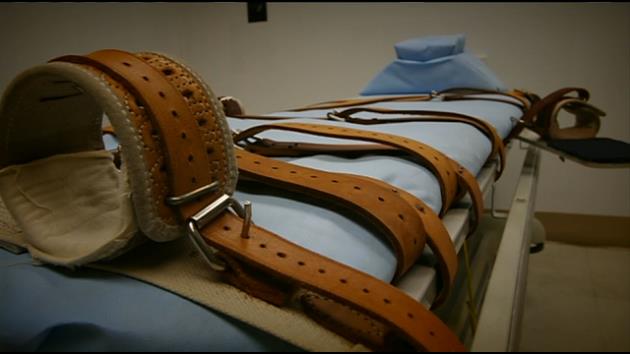FLORENCE, Ariz. (AP) — An Arizona man convicted of murder in the 1984 killing of an 8-year-old girl was put to death Wednesday in the state’s second execution since officials resumed carrying out the death penalty in May following a nearly eight-year hiatus.
Frank Atwood, 66, died by lethal injection at the state prison in Florence for his murder conviction in the killing of Vicki Lynne Hoskinson, whose body was found in the desert, Arizona Attorney General Mark Brnovich said in a statement.
Vicki Lynne went missing months earlier after leaving her home in Tucson to drop a birthday card in a nearby mailbox.
The U.S. Supreme Court cleared the way for Atwood’s execution Wednesday morning after rejecting a final appeal by his lawyers. He died at 10:16 a.m., Brnovich said.
Atwood was the second Arizona prisoner to be put to death in less than a month. The execution of Clarence Dixon last month ended Arizona’s halt to executions that was blamed on the difficulty of obtaining lethal injection drugs and criticism that a 2014 execution in the state was botched.
Death penalty opponents worry that Arizona will now start executing a steady stream of prisoners who have languished on death row, but state officials didn’t immediately respond to requests for comment on their future execution plans. No other executions have been scheduled so far in Arizona, which now had 111 prisoners on death row.
Atwood was accompanied through the process of being prepared for the lethal injection by a priest, witnesses to the execution said at a news conference. He had claimed innocence, but did not address the killing with his last words.
The witnesses said he thanked the priest “for coming today and shepherding me into the faith” and added: “I pray the Lord will have mercy on all of us and that the Lord will have mercy on me.”
Witnesses also said the process of setting up IVs into Atwood for the injection went smoothly, though medical personnel could not locate a vein for his right arm and put the IV in his right hand, at Atwood’s suggestion.
The girl’s mother, Debbie Carlson, was also a witness to the execution and told reporters after Atwood died that “Vicki was a vibrant little girl with an infectious laugh and a smile that would melt your heart.”
Carlson added: “Her royal blue eyes reflected an old soul of wisdom, and her freckled nose was unique and we are blessed to see it in our grandchildren today. Vicki was a feisty little one that always kept you on your toes and will forever be known as dennis the menace, giggling all the way”
Judges in recent weeks had rebuffed attempts by Atwood’s lawyers to have the execution delayed.
Atwood’s attorneys told the Supreme Court in court filings that the aggravating factor that made his crime eligible for the death penalty was invalidly applied. He was convicted in 1975 in California for lewd and lascivious conduct with a child under 14 and was convicted of Vicki Lynne’s killing in 1987. Judges have rejected that legal argument in the past.
They also said Atwood would undergo excruciating suffering strapped to the gurney while lying on his back because he has a degenerative spinal condition.
Prosecutors claimed that Atwood was trying to indefinitely postpone his execution through legal maneuvers, saying his pain would be be alleviated by propping him with a pillow on the gurney, which has a tilting function.
Atwood did not complain about back pain during the process to prepare him for the lethal injection, said Henry Brean, a reporter for the Arizona Daily Star who was one of the execution witnesses.
Authorities have said Atwood kidnapped Vicki, whose remains were discovered in the desert northwest of Tucson nearly seven months after her disappearance. Experts could not determine the cause of death from the remains, according to court records.
Dixon was executed on May 11 for his murder conviction in the 1978 killing of Deana Bowdoin, a 21-year-old Arizona State University student.
His execution was criticized by death penalty experts because it took officials about 30 minutes to insert an IV into his body to deliver the lethal drug and 10 minutes after that to die.
They said executions should take seven to 10 minutes from the beginning of the IV insertion process until the moment the prisoner is declared dead.
The execution team first tried and failed to insert an IV into Dixon’s left arm before they were able to connect it in his right arm. They then made an incision in his groin area for another IV line.
Dixon’s execution was the first to be carried out in the state since the July 2014 execution of Joseph Wood, who was given 15 doses of a two-drug combination over nearly two hours.
Wood snorted repeatedly and gasped before he died. His attorney said the execution had been botched. ___
This story corrects that the execution witness who said Atwood didn’t complain about back pain was Arizona Daily Star reporter Henry Brean, not KVOA-TV reporter Lupita Murillo.
Copyright 2024 The Associated Press. All rights reserved. This material may not be published, broadcast, rewritten or redistributed.

